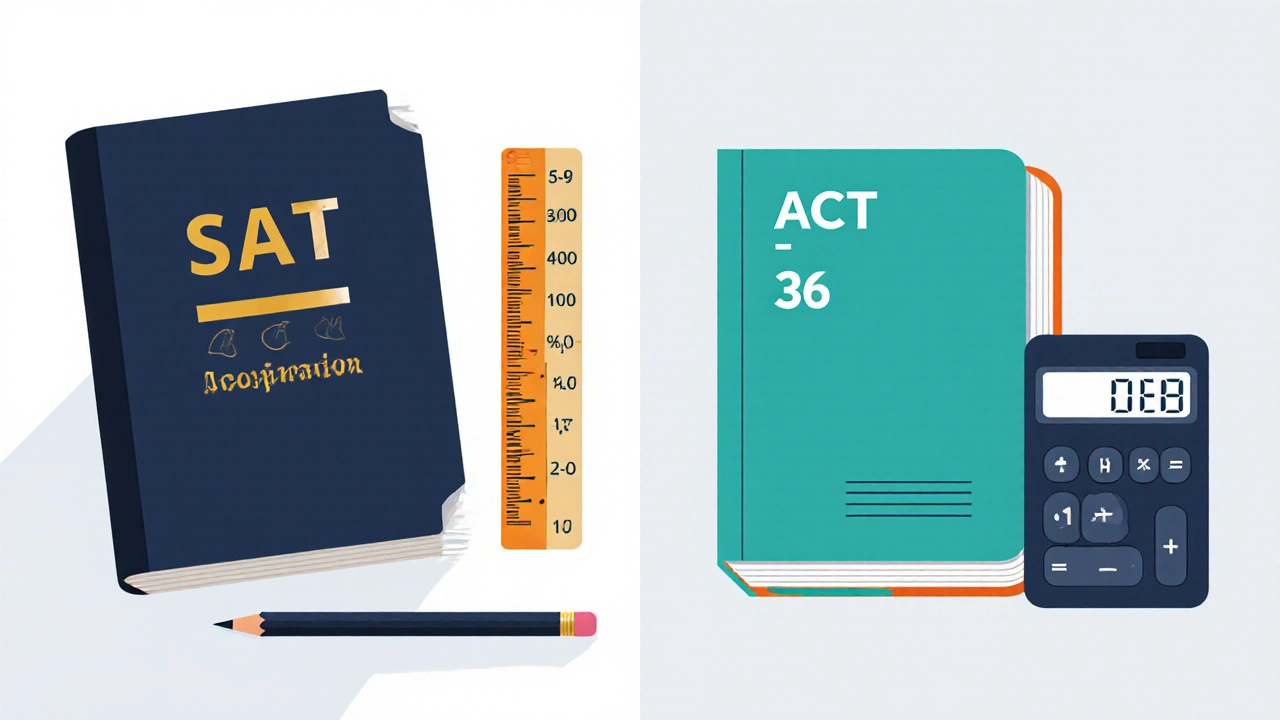Exam Volume Comparison Tool
Compare Your Exam Volume
Why Test Volume Matters
High test-taker numbers indicate broader acceptance and familiarity in college admissions. The SAT's 2 million annual test-takers make it the most popular exam in the US, influencing scholarship opportunities and admissions decisions.
If you ask anyone who’s ever applied to a U.S. college, the answer to “what’s the most popular exam in the US?” will almost always be the most popular exam US. The numbers back it up: roughly 2million high‑school seniors sit for this test every spring, dwarfing every other standardized exam in the country.
Why test‑taker numbers matter
Popularity isn’t just about hype; it’s about how many people actually take the exam. The National Center for Education Statistics (NCES) tracks annual testing data and shows the SAT consistently outpaces the ACT, GRE, GMAT, and even the AP suite in sheer volume.
Meet the SAT
The SAT is a standardized college‑entrance exam created by the College Board. It measures reading, writing, and math skills and is scored on a 400‑1600 scale. Since its 1926 debut, the test has evolved-from an essay component to a digital format rolled out in 2024.
How the SAT stacks up against the ACT
| Feature | SAT | ACT |
|---|---|---|
| Administering body | College Board | ACT, Inc. |
| Sections | Reading, Writing & Language, Math (No‑calc & Calc) | English, Math, Reading, Science |
| Scoring range | 400‑1600 | 1‑36 |
| Test‑taker volume (2024) | ~2,000,000 | ~1,200,000 |
| Digital option | Yes (since 2024) | Yes (pilot 2023) |
Both exams are accepted by virtually every U.S. college, but the SAT’s larger pool of test‑takers gives it a cultural edge. Schools often publish average SAT scores in their admissions profiles, making the test a familiar reference point for counselors and applicants alike.

Other big exams you might hear about
While the SAT leads in volume, several other exams play crucial roles in the academic ecosystem:
- ACT: The main competitor, favored in the Midwest.
- GRE: Graduate‑school entry test, taken by over 500,000 candidates annually.
- GMAT: Business‑school gateway, with roughly 200,000 test‑takers each year.
- Advanced Placement (AP) Exams: College‑level courses taken in high school; the AP Biology and AP US History exams each draw over 300,000 students.
These exams serve specific niches-graduate studies, business school, or earning college credit-but none match the SAT’s reach among high‑school seniors.
What fuels the SAT’s dominance?
Three forces keep the SAT at the top of the popularity chart:
- College admissions weight. Most U.S. universities list SAT scores alongside GPA and essays. Even schools with test‑optional policies still consider the SAT for scholarship eligibility.
- Extensive test‑preparation ecosystem. Companies like Khan Academy partner with the College Board to offer free practice, while for‑profit tutors churn out premium courses.
- Broad accessibility. The SAT is offered in over 2,000 test centers nationwide, plus online options for remote students, making it easier to schedule than many niche exams.

Choosing the right exam for you
Even if the SAT is the most taken test, it might not be the best fit for every student. Consider these questions:
- Do you prefer a stronger science component? The ACT’s science reasoning section could showcase your strengths.
- Are you aiming for a graduate program? The GRE or GMAT will be the relevant gatekeepers.
- Do you want college credit now? AP Exams let you earn credits before you step foot on campus.
In practice, many students register for both the SAT and ACT, then submit the higher score to colleges. It’s a safe strategy when you’re unsure which format suits you best.
Common misconceptions about the most popular exam
Myth #1: "The SAT is obsolete because many schools are test‑optional." While test‑optional policies have grown, the SAT still influences merit‑based aid, honors programs, and out‑of‑state tuition discounts.
Myth #2: "You need a private tutor to succeed." Free resources from the College Board and Khan Academy now cover the entire curriculum, and many self‑studied students score in the 1400‑1500 range.
Myth #3: "The test is the same for every student.” The digital SAT adapts question difficulty based on real‑time performance, making each test‑day experience slightly unique.
Frequently Asked Questions
Is the SAT still the most taken exam in the US?
Yes. In 2024 the SAT had about 2million test‑takers, outpacing the ACT’s 1.2million and all other standardized tests combined.
How many states offer the SAT?
All 50 states plus U.S. territories host at least one SAT test center, and the digital version can be taken from a certified home‑testing site.
Can I send only my SAT scores if I also take the ACT?
Absolutely. Colleges let you choose which scores to send; many applicants submit the higher of the two.
What is the cost of the SAT?
The standard fee is $55 for the main test; adding the optional essay (now discontinued) used to cost extra. Fee waivers are available for low‑income students.
How can I prepare for free?
Khan Academy’s partnership with the College Board provides personalized practice quizzes, full‑length tests, and video lessons at no cost.
